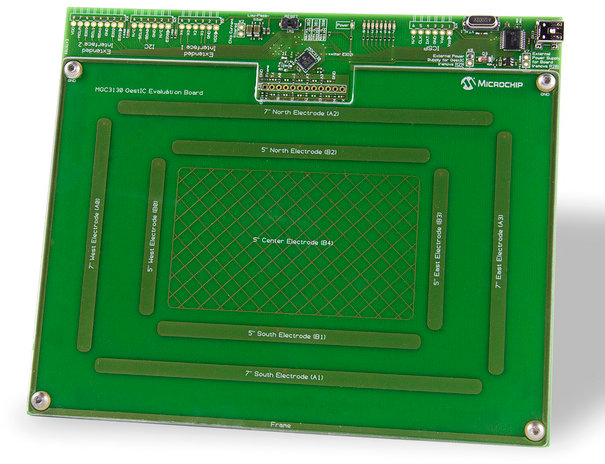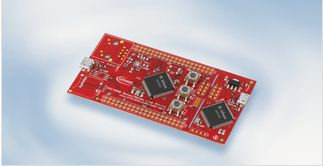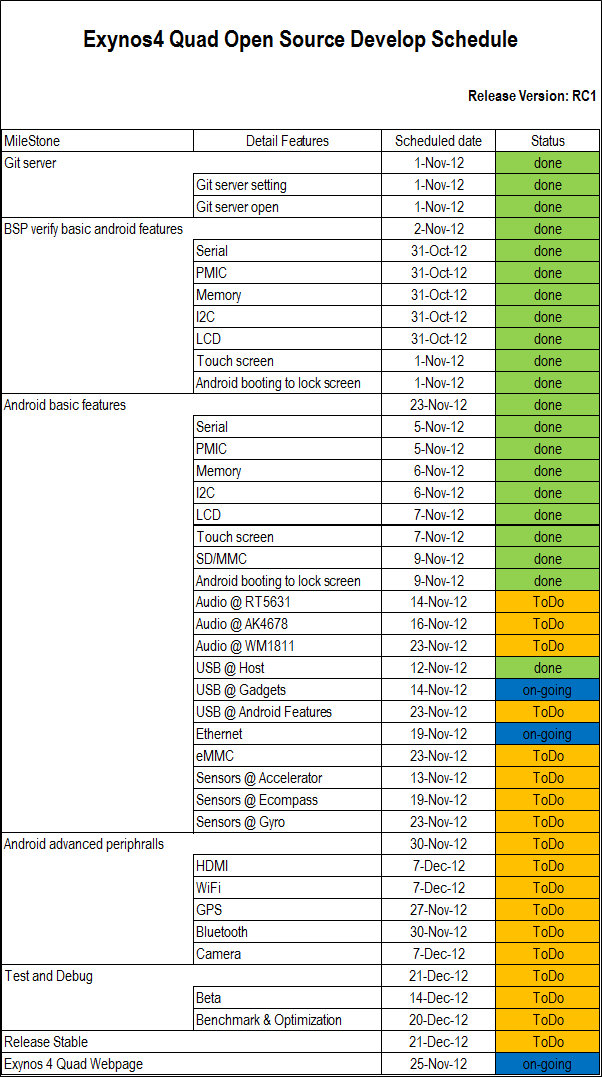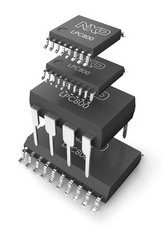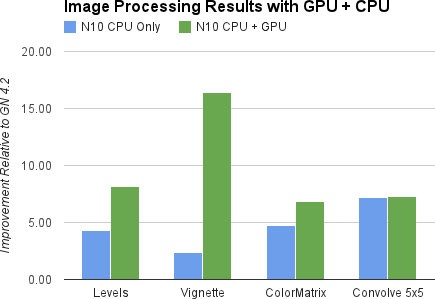Microchip Technology has recently announced the MGC3130, the world’s first electrical-field (E-field)-based 3D gesture controller based on Microchip’s patented GestIC. This technology allows you to use hand gestures to control a computer with the accuracy of a mouse. The end result looks somewhat similar to what is done with the Leap Motion controller but the range is shorter as you need to be within 15cm of the surface with the electrodes. However, I would suspect this technology to be cheaper and consume less power. The picture above is the development kit with MGC3130 chipset at the top center of the board. With a power consumption as low as 150 microwatts in active sensing state, the MGC3130 enables always-on 3D gesture recognition (even for battery powered devices). The power consumption is up to 90% lower than camera-based gesture systems. Here are MGC3130 key features: 0 (touch) to 15 cm detection range […]
ISEE is Working on IGEPv5 Board with TI OMAP 5 and Needs Your Feedback
ISEE IGEPv2 is a low cost development board based on TI DM3730 (Cortex A8) that is relatively popular with the development community, used by Free Electrons for their embedded Linux training courses, and part of a List of 39 Low Cost Linux Friendly Boards and Products I published earlier this year. Yesterday, Michael Opdenacker, founder of Free Electrons, wrote a blog post saying ISEE was working on IGEPv5 development board based on Texas Instruments OMAP5 dual core Cortex A15 processor that can run up to 2 GHz, supports DDR3 RAM, full HD 3D recording, and 4 displays and cameras simultaneously among other things. This is still early development and the board exact features have not been defined yet. ISEE is actually looking for the community feedback to provide the best board possible and you can leave your inputs and expectations by commenting on Free Electrons blog. You could have a […]
Infineon Unveils Low Cost XMC4500 Relax & Relax Lite Kits For Cortex M4 XMC4500 MCUs
Infineon XMC4500 micro-controller family is based on ARM Cortex-M4 core @ 120 MHz, comes with 128 to 160 KB SRAM, 512 KB to 1 MB “Program Memory” as well as interfaces & peripherals, such as DMA, Ethernet, USB, ADC, DAC, SPI, I2C, I2S, UART and more. They are specifically designed for industrial applications supporting temperatures up to 125°C. The family was announced at Embedded World 2012 in February, and mass production started in May. This week at Electronica 2012, the company announced two low cost development kits for XMC4500 MCU: XMC4500 Relax Lite Kit (10 Euros): XMC4500 Microcontroller (ARM® Cortex™-M4F based) Detachable on-board debugger Power over USB ESD and reverse current protection 2 x user button and 2 x user LED 4 x SPI-Master, 3x I2C, 3 x I2S, 3 x UART, 2 x CAN, 17 x ADC (12 bit), 2 x DAC, 31x PMW mapped on 2 Pin Headers […]
Kontron ULP-COM-sAMX6i – Freescale i.MX6 Solo, Dual and Quad Computers on Module
Freescale i.MX6 series was first announced in January 2011, and there have been delays due to problem with the silicon, but now the i.MX6 processors are finally in mass production, and lots of different products are using this SoC. The latest product I found is ULP-COM-sAMX6i by Kontron which is a series of computers on module based on ULP-COM (Ultra Low Power) standard featuring Freescale i.MX6 solo, dual and quad processors. Those commercial and industrial grade modules target markets such as transportation, medical and military. Here are the technical specifications of the modules: CPU – Freescale i.MX 6 Single, Dual and Quad Core ARM Cortex-A9 @ 800 MHz (Industrial grade), 1 GHz and 1.2 GHz System Memory – Up to 2 GB DDR3 Storage – Optional onBoard NAND/eMMC up to 64GB Graphics / Video – Dual Display, HD 1080p Decode/Encode and 2D/3D acceleration Video Output Resolution Parallel LCD 18/24 bit […]
Learn How to Write a Driver for Linux 3.x With The Linux Driver Template
A Linux Driver Template (LDT) has been published to help new Linux kernel developers writing hardware device drivers. Constantine Shulyupin posted the Linux Driver Template (LDT) on the Linux mailing list in order to merge it into the mainline Linux kernel. The code can be used as as a starting point for new drivers, and shows how to use several Linux facilities such as module, platform driver, file operations (read/write, mmap, ioctl, blocking and nonblocking mode, polling), kfifo, completion, interrupt, tasklet, work, kthread, timer, simple misc device, multiple char devices, Device Model, configfs, UART, hardware loopback, software loopback and ftracer. This sample has been added to other device drivers samples in eLinux.org. And if you want to learn further there’s always the Linux driver bible: “Linux Device Drivers, Third Edition” which can be downloaded for free as PDF, although it’s for 2.6.10 kernel and many parts may not be up-to […]
Samsung Exynos 4412 (Origen 4 Quad Board) Open Source Development Schedule
If you’ve got an Exynos 4412 development board such as Hardkernel ODroid-X or Insignal Origen Quad, or even other devices based on Exynos 4412 such as the Samsung Galaxy S3, you may be interested to know the open source development schedule for the platform as show below (Source: Origenboard.org). Samsung already released the source code for Samsung Galaxy S3 in June, but this should add more recent drivers and support for more peripherals. The stable release should be available on the 21st of December 2012, but in the meantime, you could always pickup features earlier as they are being implemented. The code is available in http://git.insignal.co.kr/ (Git repository) and is maintained by both Insignal and Samsung.
NXP Launches Cortex M0+ LPC800 MCU and $15 LPC812-LPCXpresso Board
Following ARM Cortex M0+ announcement in March 2012, NXP Semiconductors has just announced the LPC800, tiny 32-bit MCUs based on Cortex M0+ core @ 30 MHz designed to replace 8-bit MCUs, together with LPCXpresso development board for the LPC800. The MCUs come with 1 to 4KB SRAM, 4 to 16 KB Flash, several serial interfaces and are available in SO20, TSSOP20, TSSOP16 and even DIP8 packages. Here are the key features of NXP new ultra low power 32-bit MCU family: ARM Cortex-M0+processor up to 30 MHz, software compatible with Cortex M0, M3 and M4 cores Memories: 4 to 16 kB Flash (with 64 Byte page size) 1 to 4 kB SRAM Serial Peripherals: Up to 3 USART interfaces Up to 2 SPI controllers 1x I2C-bus interface Timers: Multiple-channel multi-rate timer (MRT) State Configurable Timer (SCT) Self Wake-up Timer (WKT) clocked from either the IRC or a low-power clock source Windowed […]
Android Jelly Bean 4.2 SDK, Source Code and Binary Images Are Now Available
As the Nexus 4 smartphone and Nexus 10 tablet became available for purchase yesterday, Google released Android 4.2 SDK for developers and pushed Android 4.2 to AOSP. The Android 4.2 (Jelly Bean) SDK platform (API level 17) brings the following key improvements: Performance – Renderscript computation can be run directly in the GPU on the Nexus 10. This is a first since Exynos 5250 is the first ARM processor capable of supporting GPGPU (via Mali-T604 GPU). See the chart of the right showing results between CPU and CPU+GPU computation of some multimedia benchmarks. Lock screen widgets – Users can now place interactive lock screen widgets directly on their device lock screens. This only requires a small update to adapt existing widgets to run on the lock screen. Daydream – An interactive screensaver mode that can be used when the device is charging or docked to a desk dock. Better external […]


